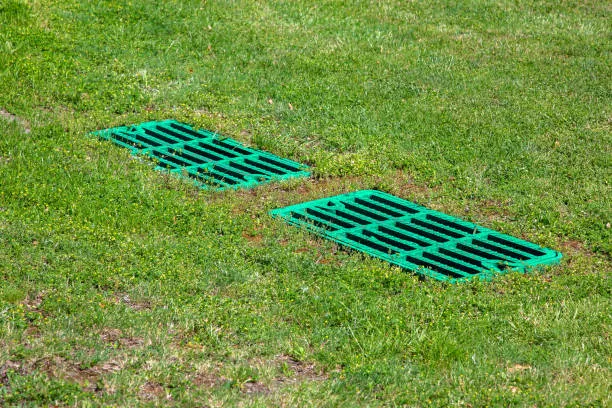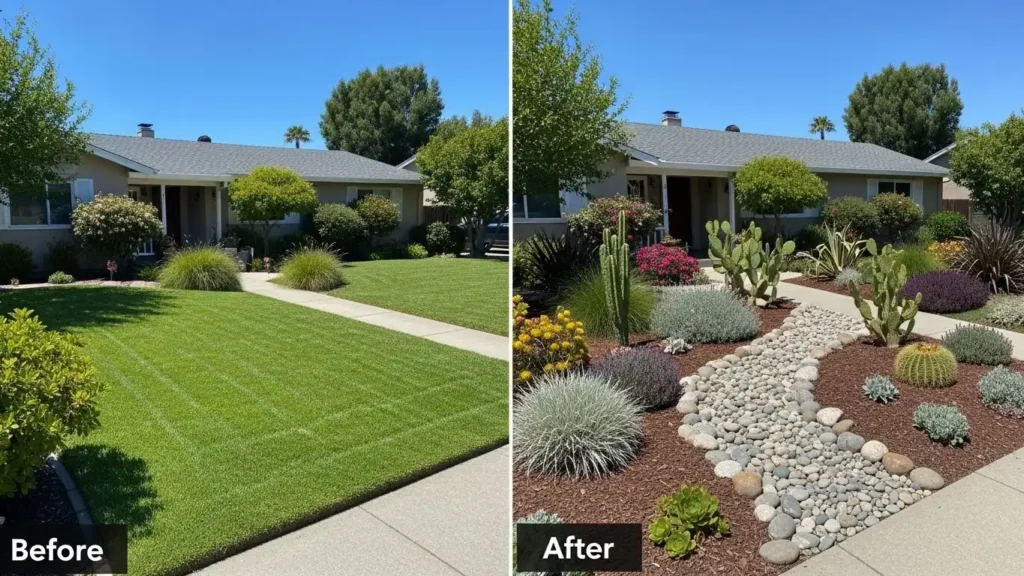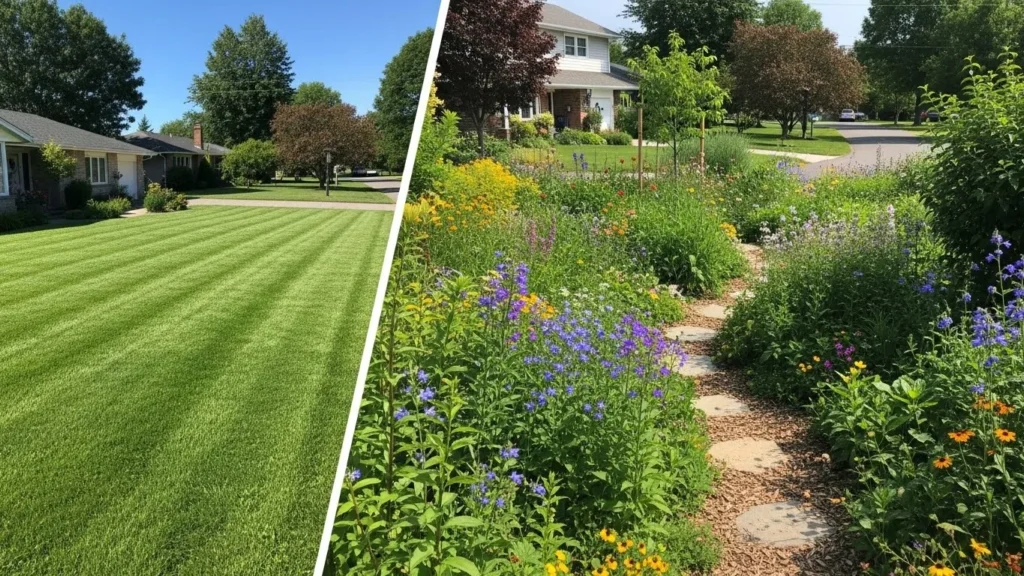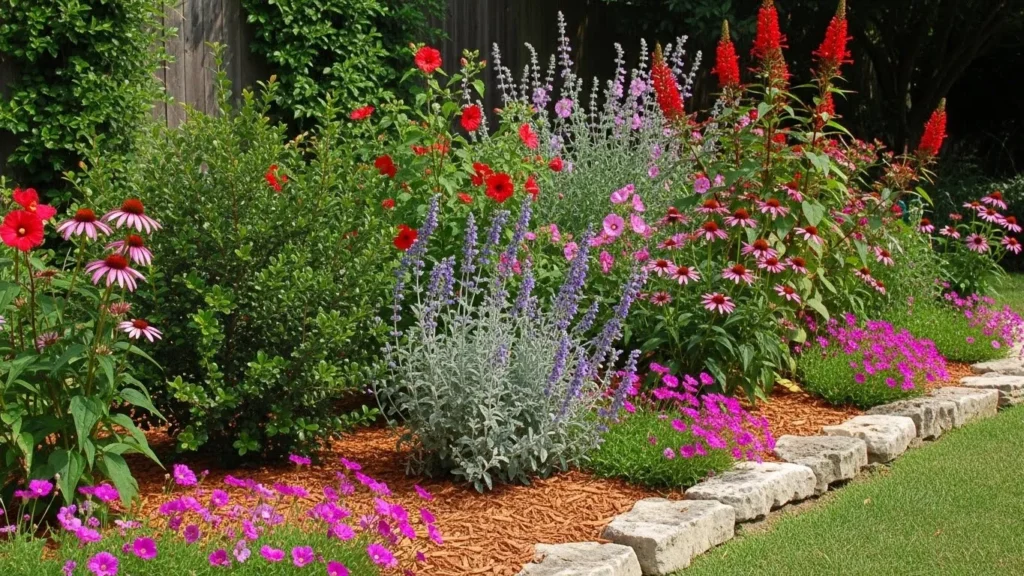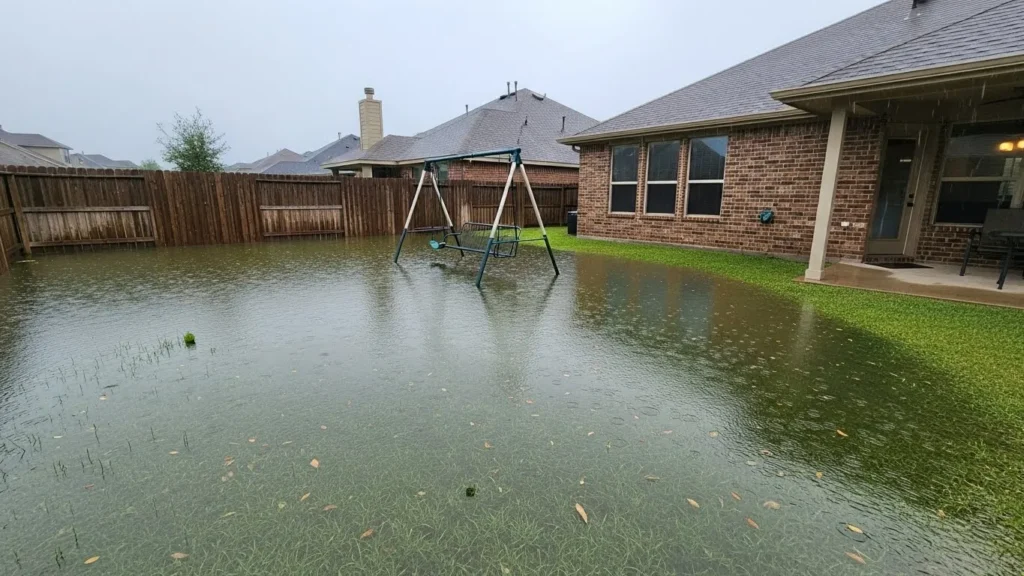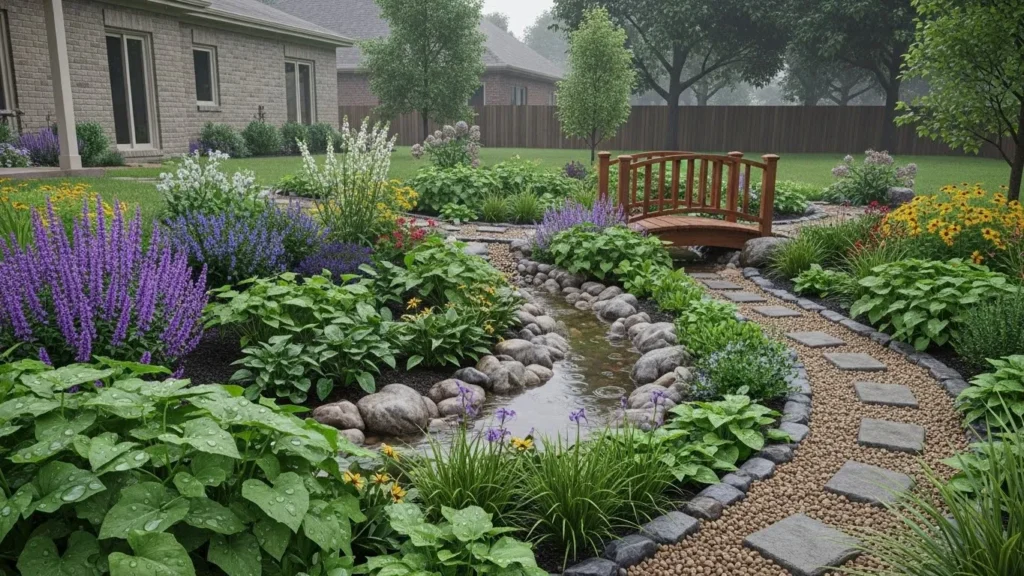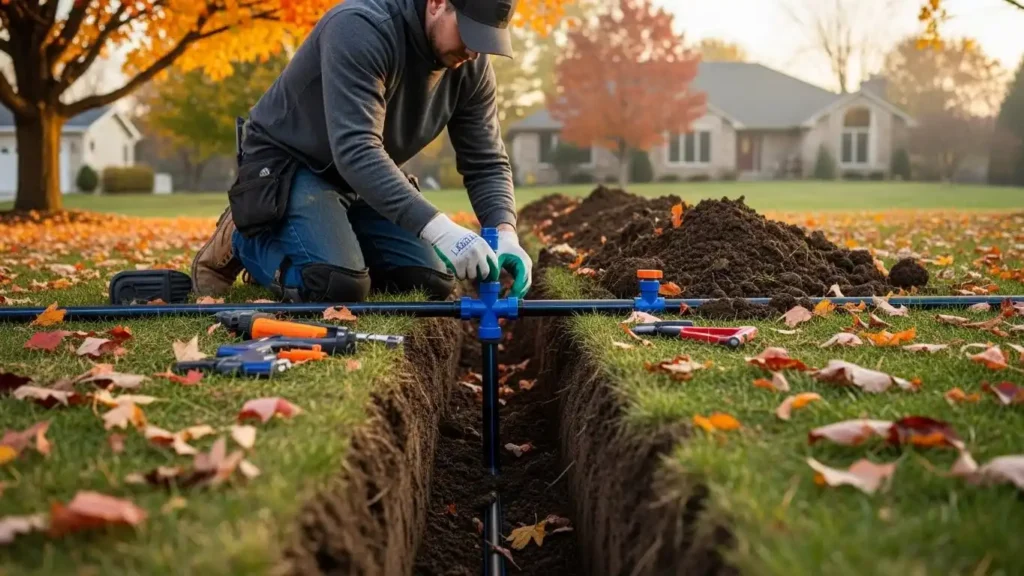Don’t let drainage issues destroy your lawn. Learn to spot and fix common landscape drainage problems.
When water doesn’t drain properly in your yard, the results can be ugly and costly. From soggy lawns and muddy patches to structural damage to your home’s foundation, poor drainage is a problem you can’t afford to ignore. Understanding the most common landscape drainage problems and knowing how to address them can protect your property, improve curb appeal, and prevent expensive repairs.
Table of Contents
ToggleCommon Drainage Problems in Yards
There’s always a reason water won’t drain, and it usually gives itself away. Here are the most frequent culprits behind yard flooding and soggy lawns.
-
Pooling Water
Standing water after rain is one of the clearest signs of poor drainage. If left untreated, it can drown plants, breed mosquitoes, and weaken soil structure.
Causes:
- Compacted soil that prevents infiltration
- Low spots in the lawn
- Blocked drainage paths
Solutions:
- Aerate compacted soil to improve water absorption.
- Fill and regrade low spots so water naturally flows away from problem areas.
- Clear debris from existing drains or create swales to channel water.
Addressing the underlying cause early keeps your lawn healthy, prevents pest issues, and improves water movement throughout your yard.
-
Runoff Issues
Heavy rain can turn your yard into a miniature river if water is not managed correctly. Excess runoff can wash away mulch, damage plant beds, and erode paths.
Causes:
- Sloped driveways or patios directing water toward the lawn
- Impermeable surfaces like concrete or stone without proper drainage gaps
Solutions:
- Install permeable pavers or gravel strips to slow and filter water.
- Create rain gardens in strategic areas to absorb and filter runoff.
- Use downspout extensions to send roof water well past your foundation.
By slowing the flow and giving water places to soak in, you can protect your planting beds and prevent erosion during storms.
-
Soil Erosion
Erosion happens when water flow carries away the top layer of soil, leaving roots exposed and weakening plant health.
Causes:
- Steep slopes without vegetation
- Concentrated runoff from gutters or slopes
- Poor ground cover choice
Solutions:
- Plant deep-rooted ground covers or shrubs to anchor soil.
- Use retaining walls or terracing to break long slopes.
- Spread mulch to reduce water speed and protect bare soil.
Some property owners have found that incorporating creative retaining wall ideas can not only prevent erosion, but also add structure and visual appeal.
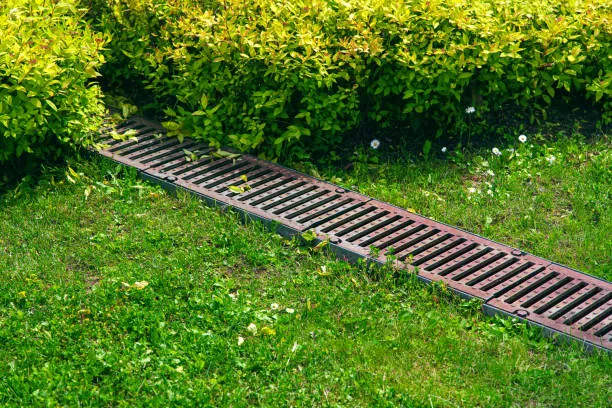
Effective Drainage Solutions
Once you know what’s causing the issue, it’s time to pick the fix that will actually work. Solutions range from simple grading changes to installing systems that physically redirect water away from problem spots.
-
Grading and Slope Adjustments
Proper grading ensures water flows away from your home and not toward it. Get the slope wrong, and even top-notch drainage solutions won’t hold up.
Best Practices:
- Maintain a minimum slope of 2% (about ¼ inch per foot) away from buildings.
- Avoid depressions near foundations where water can collect.
- Consider professional regrading if natural slope is severely off.
Adjusting the slope can also improve outdoor functionality. Many landscape ideas to improve backyard mood suggest incorporating gentle elevation changes for both visual interest and drainage efficiency.
-
French Drains
A French drain is a simple but effective system for redirecting water. It consists of a trench filled with gravel and a perforated pipe that collects and moves water away from trouble spots.
When to Use:
- Areas with consistent pooling after storms
- Low points in the yard with slow drainage
- Spaces near structures where water collects
Key Installation Tips:
- Slope the pipe at least 1 inch per 8 feet toward the outlet.
- Wrap the pipe in landscape fabric to prevent clogs from soil and roots.
- Choose a gravel size that allows easy flow while supporting the pipe.
-
Preventing Costly Water Damage
Water that is not properly managed can lead to foundation cracks, mold growth, and rotting wood structures. Prevention is far cheaper than repairing water damage.
Preventive Measures:
- Regularly inspect gutters and downspouts for blockages.
- Monitor your yard after storms to spot new problem areas early.
- Combine multiple strategies, such as grading, French drains, and vegetation, for a comprehensive approach.
Conclusion
If you have noticed pooling water, erosion, or soggy patches in your yard, do not wait for them to become bigger problems. The sooner you address yard flooding and drainage issues, the easier and less expensive the fix will be. Inspect your property after the next rain, identify where water collects, and apply the right drainage solutions for each issue. A well-drained yard not only protects your home but also creates a healthier, more attractive outdoor space.
Take action today to safeguard your landscape and prevent costly damage. If you are unsure where to start, visit Let Us Do It Landscaping today. We can assess your property and recommend the best approach for lasting results.
